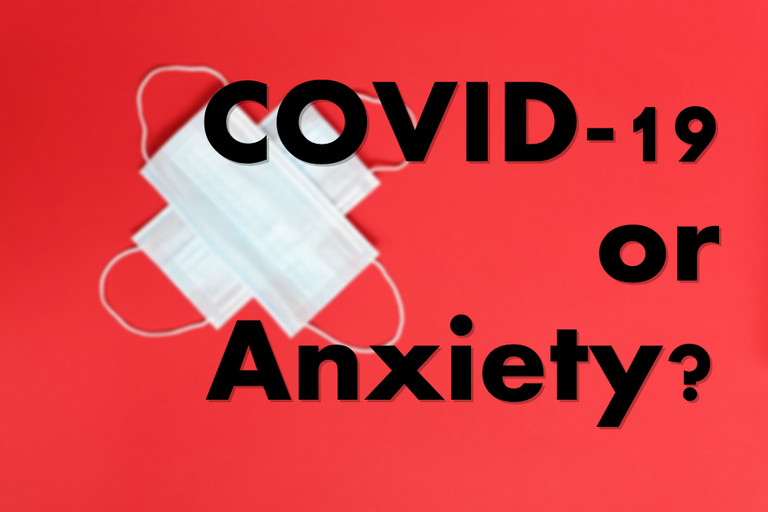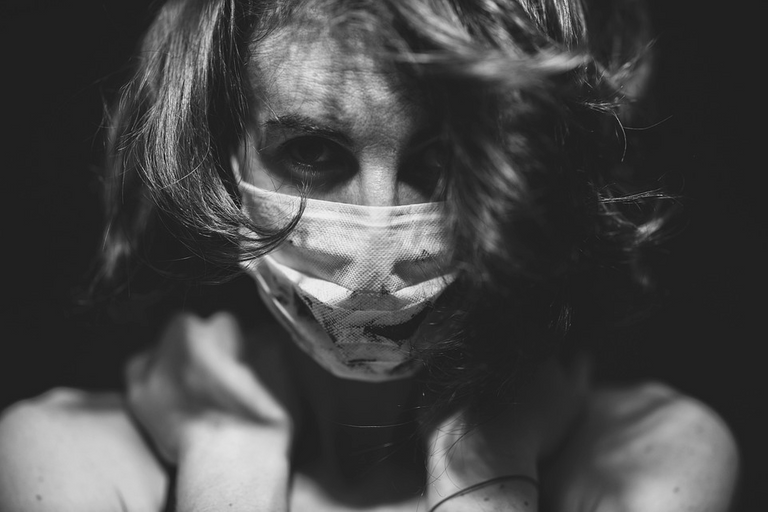Breathing problems, chest pain or general malaise are symptoms that many people experience during quarantine for COVID-19. This symptomatology corresponds to that of a panic attack or generalised anxiety and today it is often confused with the symptoms of the coronavirus. Today I want to share some tips to know what is happening with your body and how to deal with this problem.
Problemas respiratorios, dolor de pecho o malestar general son síntomas que muchas personas experimentan durante la cuarentena de COVID-19. Esta sintomatología corresponde a la de un ataque de pánico o ansiedad generalizada y hoy en día se confunde a menudo con los síntomas del coronavirus. Hoy quiero compartir algunos consejos para saber qué está pasando con tu cuerpo y cómo tratar este problema.

Source

According to the Mayo Clinic, a panic attack is a sudden episode of intense fear that causes serious physical reactions when there is no real danger or apparent cause. As a result, you may feel tachycardia, tremors, chest pain and even chills, but how do you know if you are having a panic attack, generalized anxiety or the symptoms of the virus?
The key is to look for other symptoms.
Shortness of breath is a clear symptom of the coronavirus, but it can also be a clear sign of anxiety. If you have contracted the coronavirus, you should also experience severe coughing spells and high fever, and these symptoms are hardly attributable to anxiety. It is important to know that you do not have to feel nervous or anxious to notice the effects of anxiety on your body.
It should be noted that panic attacks are more unexpected and more immediate than anxiety attacks, but both have similar symptoms and treatments.
Try breathing exercises.
Try to structure it into some kind of pattern to make it more regular and calm, like square breathing. Basically, you need to inhale for four seconds, hold your breath for four seconds, exhale for four seconds and hold your breath for four seconds. (Repeat the cycle until you start to feel better).
Según la Clínica Mayo, un ataque de pánico es un episodio repentino de miedo intenso que causa reacciones físicas graves cuando no hay un peligro real o una causa aparente. Como resultado, puedes sentir taquicardia, temblores, dolor en el pecho e incluso escalofríos, pero ¿cómo sabes si estás teniendo un ataque de pánico, ansiedad generalizada o los síntomas del virus?
La clave es buscar otros síntomas.
La falta de respiración es un síntoma claro del coronavirus, pero también puede ser un signo claro de ansiedad. Si ha contraído el coronavirus, también debería experimentar fuertes ataques de tos y fiebre alta, y estos síntomas difícilmente se pueden atribuir a la ansiedad. Es importante saber que no tiene que sentirse nervioso o ansioso para notar los efectos de la ansiedad en su cuerpo.
Cabe señalar que los ataques de pánico son más inesperados y más inmediatos que los de ansiedad, pero ambos tienen síntomas y tratamientos similares.
Pruebe con ejercicios de respiración.
Intente estructurarlo en algún tipo de patrón para hacerlo más regular y tranquilo, como la respiración cuadrada. Básicamente, necesita inhalar durante cuatro segundos, aguantar la respiración durante cuatro segundos, exhalar durante cuatro segundos y aguantar la respiración durante cuatro segundos. (Repita el ciclo hasta que empiece a sentirse mejor).
 Source
Source
There are many ways to treat anxiety, so you'll have to find the one that works best for you. Try to take more care of your diet, exercise, use meditation applications or do yoga exercises. Don't forget that you can call a psychologist or special help lines to help you cope with your situation during these difficult times and if you suffer from severe anxiety, there are medicines that can also help you calm down and rest better. Just because you do not have a coronavirus does not mean that your mental health is not important. It is normal to feel more anxiety and discomfort during these times. And remember: you are not alone.
Hay muchas maneras de tratar la ansiedad, así que tendrás que encontrar la que mejor funcione para ti. Intente cuidar más su dieta, hacer ejercicio, usar aplicaciones de meditación o hacer ejercicios de yoga. No olvides que puedes llamar a un psicólogo o a líneas de ayuda especiales para que te ayuden a afrontar tu situación durante estos momentos difíciles y si sufres de ansiedad grave, hay medicamentos que también pueden ayudarte a calmarte y a descansar mejor. El hecho de que no tenga un coronavirus no significa que su salud mental no sea importante. Es normal sentir más ansiedad y malestar en estos momentos. Y recuerde: no estás solo/a.
Gracias por leerme.


Congratulations @sirpoe! You have completed the following achievement on the Hive blockchain and have been rewarded with new badge(s) :
You can view your badges on your board and compare yourself to others in the Ranking
If you no longer want to receive notifications, reply to this comment with the word
STOPDo not miss the last post from @hivebuzz: